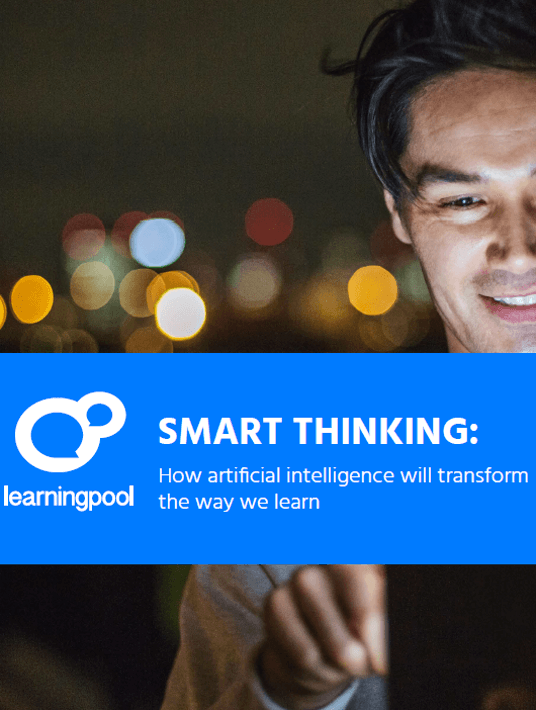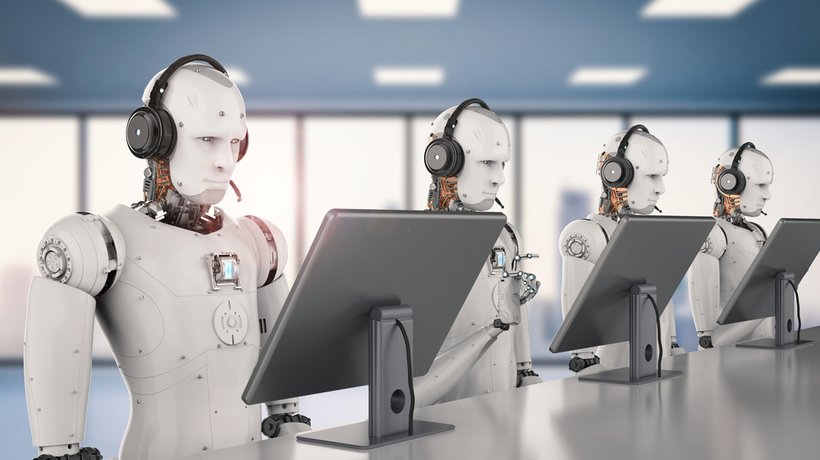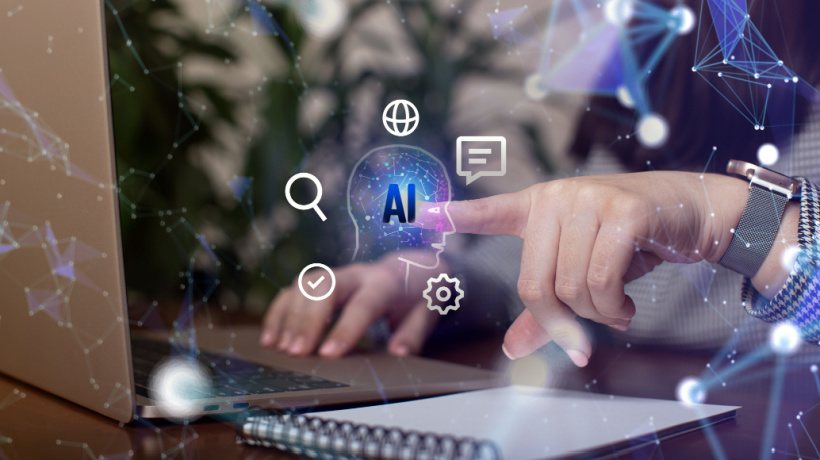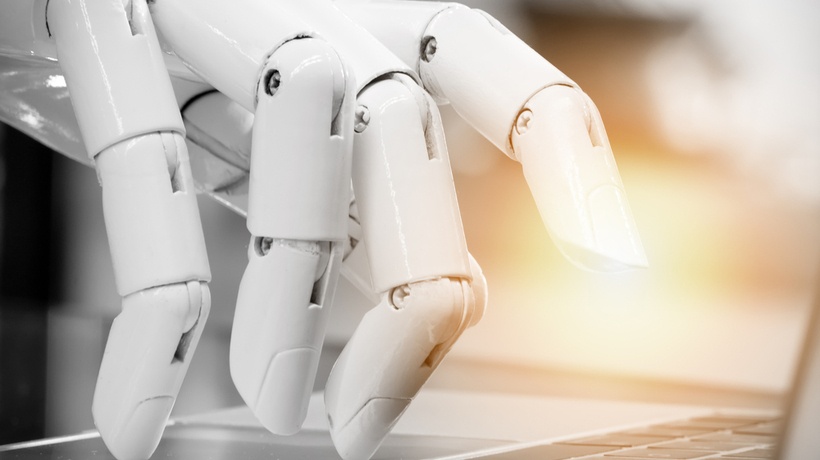Revitalizing Old Ideas With AI-Based Performance Support
No-one doubts that training is important, but how do we make it effective? Training takes time and takes employees away from their work, so it’s not always cost-effective.

Training, it’s sad to say, can also be forgettable. We’ve all had that feeling of trying to recall a piece of vital information, with it eluding us when we need it the most.
Experts differ on the exact figure, but much of what you learn in a training session (even up to 50%) is left there as you walk out of the classroom or switch off your computer. There’s even a name for it: the Ebbinghaus Effect – first observed in the 19th century[1].
This gap between what we’ve learned and when we need it can be filled or avoided altogether by performance support.
Handy (and to-hand) resources are designed to help employees access the information they need as they need it. Performance support also allows employees to learn on the job, rather than having them step away from the desk.
Context is also key. Our friend Google is giving us the answer to anything. Well, try googling ‘Performance Support’ and you’ll get over 500 million results. That’s not support; that’s information overload. Real and effective support needs to be targeted, contextualized, and, most of all, relevant.
5 Key Moments Of Need
Bob Mosher and Conrad Gottfredson have identified 5 key moments where performance support plays a critical role:
- When we learn something for the first time.
- When we seek to learn more about something.
- When we try to apply or remember something or adapt performance to a unique situation.
- When we attempt to solve a problem or deal with something that has gone wrong.
- When something changes that requires a change in how our work gets done[2].
You can see that these moments are most likely to occur when we’re doing our jobs. No amount of simulation or scenario training can ever quite prepare you for the time when you really need that information. It’s at these moments when you would turn to a more experienced colleague for the answer. The experience involves understanding the significance of the question and the relevance of the answer and is based on being in that same situation many times before.
The Revolution
Performance support is certainly useful, but why is this old idea so relevant today? The answer lies in the way information technology accesses and processes information, and its effect on the way we learn today. These tendencies militate for the development and deployment of technologically-enhanced Performance Support.
Information technology has made learners more independent. You don’t need to attend a course to find out how to do something; for nearly every task imaginable there’s a YouTube video. When people say “there’s an app for that“, they’re only half joking.
The availability and accessibility of such resources allow us to direct our own learning. Remember the days of night school and correspondence courses? No? Neither do most people. Those forms and methods of learning have disappeared, but new opportunities and ways of learning bring their own challenges.
When adult learning increasingly takes place outside places of education and work, it tends to be informal, even incidental. How do we know it’s effective? How do we recognize it? How do we accredit it? How do we harness it to benefit performance at work?
These questions present an appreciable challenge for employers. We can’t ignore these trends, but we can make them part of the way we learn at work. Here again, the division between life inside and outside work is being blurred. And it’s the learners who are blurring it, in the way they search for and acquire knowledge.
Intelligent technology and good learning design can place learners at the center of learning, harnessing their strong motivation, direction, and their expectation of knowledge and information on the go, where they need it most.
How we use technology outside work is being mirrored by the increasing use of enterprise collaboration tools at work. These tools mimic the social exchange we are familiar with on Facebook, Instagram, or Twitter.
An application like Trello, for instance, can make project management more manageable and transparent. It allows you to share tasks and schedules with your team and they can participate by adding sub-tasks, managing their own schedule, keeping the plan up to date. Slack allows collaboration on multiple projects or channels at the same time. Team members can use Slack’s threads to suggest ideas, answer queries, and post progress on projects.[3]
Putting Artificial Intelligence In The Mix
Even with such sophisticated tools tailored to the way we work today, there’s a danger of overload. While all the information we share is valuable, it’s not equally valuable all of the time. As the concept of performance support suggests, we have very specific needs that have to be addressed in a specific way and a specific time.
Let’s return for a moment to the Google search that returned 500 million results. These results are not all the same. They’re ordered and ranked by relevance and other factors, like location, your search history, other people’s searches, and, of course, by advertising.
Behind this extraordinary feat of filtering and organizing information lies some remarkable technology – Artificial Intelligence (AI) and machine learning.
For those of you who think that Artificial Intelligence is the preserve of Hollywood sci-fi thrillers, think again. AI is all around us in many of our interactions with technology. Search, employ an app, use Amazon Echo. What’s behind them? That’s right, AI.
AI And The Future Of Learning: An Example
The power of Artificial Intelligence lies in the way it understands and processes language. Natural Language Processing, as it’s known, means computers can interpret what we write and speak. You can pose questions to our search engines and receive intelligent and relevant answers, rather than a string of possible responses.
More than that, intelligent interactions can lead to recommendations, as if we’re talking to a human assistant.
Find that hard to believe? Consider this story about AI students at Georgia Tech.
Like most US college classes, this Artificial Intelligence class had graduate students working as Teaching Assistants (TAs) to help Professor Ashok Goel, run the course.
The TAs’ primary job was to provide answers to the thousands of questions undergraduates posted online (it was a large class). The TAs were becoming overwhelmed, so Professor Goel brought in another TA called Jill Watson. But Jill was different from the others: she wasn’t really a grad student.
In fact, Jill wasn’t even human! “Jill” was a computer program, based on IBM’s Watson natural language processing system.
Helped by his graduate students, Professor Goel fed Jill sample questions and programmed her with the answers. After a couple of false starts, Jill became so efficient that she was answering questions from students with a certainty of 97%. She was learning from them too. Perhaps more impressive was that the students who received answers from TA Jill had no idea they were interacting with a computer.[4]
To pass the well-known Turing test, a machine must exhibit intelligent behavior that is equivalent to or indistinguishable from that of a human being. Jill passed the test with flying colors. What’s more, she could handle questions and give responses more quickly than her human colleagues and so provide the undergrads with the learning support they needed when they most needed it.
If you want to learn more about how intelligent technology enhances performance support, download the eBook Smart Thinking: How Artificial Intelligence Will Transform The Way We Learn.
Footnotes:
- Forgetting curve
- At the Moment of Need: The Case for Performance Support and Blended Learning to Address the Five Moments of Need Infographic
- Find out more about Enterprise Collaboration tools at 28 Best Collaboration Tools To Improve Teamwork in 2018 and Digital workplace update: Why enterprise collaboration is exciting again
- Artificial Intelligence Course Creates AI Teaching Assistant









